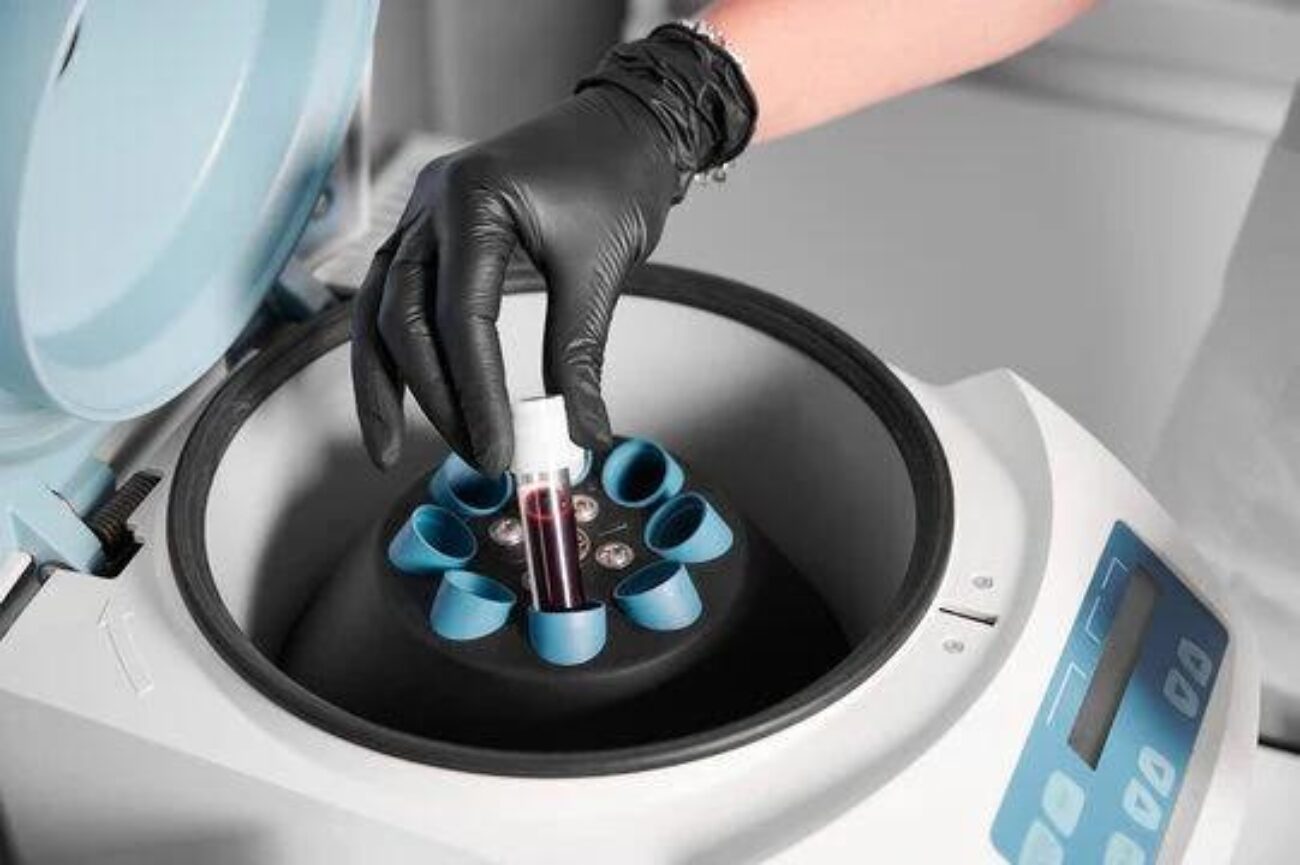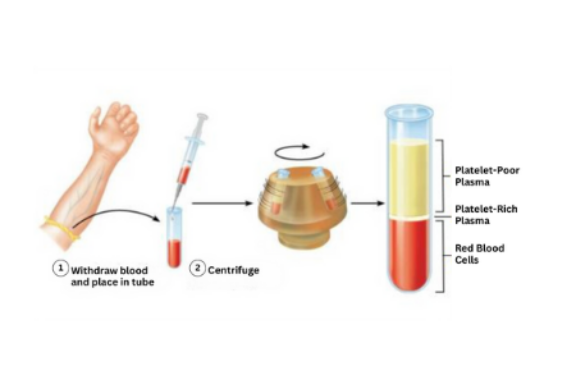Platelet-Rich Plasma (PRP) Injections

Health Begins Here.
Platelet-Rich Plasma (PRP) Injections are gaining popularity for a variety of conditions, from sports injuries to hair loss. We are proud to offer PRP Injections exclusively at our Osseo location by Daniel Johnson, D.O. (Family Medicine) and Kaitlyn Laube Ward, DPM (Podiatry).
What are Platelet-Rich Plasma (PRP) Injections?
Platelet-Rich Plasma, or PRP, is produced from your own blood. The platelets are the cells in our body that contain growth factors that stimulate the normal wound healing process, e.g., the same way that your skin heals after a scrape. With PRP, you create a supra-therapeutic level of your own platelets (over 500% more platelets than normal blood) so that you heighten the healing of a chronically injured tissue. In most cases, we need to remove scar tissue from the injured site by performing a ‘percutaneous needle fenestration or debridement’. This procedure allows platelets to work in the injured site. Your provider may choose to use ultrasound guidance to confirm the placement of the PRP in the correct tissue.

Who can receive Platelet-Rich Plasma (PRP) Injections?
PRP Injections are used for a range of conditions, from musculoskeletal pain and injuries, to hair loss procedures. Discuss with your provider if PRP is indicated for you.
Tendon, Ligament, Muscle and Joint Injuries: PRP injections may be able to treat a range of musculoskeletal injuries and conditions. For example, chronic tendon injuries such as tennis elbow or jumper’s knee can often take a long time to heal, so adding PRP shots to a treatment regimen can help to stimulate the healing process, decrease pain and enable a return to activities sooner.
Post-Surgical Healing: Post-surgical PRP injections have expanded to help heal muscles, tendons and ligaments, as procedures on these tissues have notoriously long recovery times.
Hair Loss: PRP injections can be effective in treating male pattern baldness, both in preventing hair loss and promoting new hair growth. PRP can also aid in the stimulation of hair growth after hair transplants.
How is Platelet-Rich Plasma (PRP) made?
To prepare PRP, blood is taken from your arm with a special kit similar to a normal blood test. It is then placed in a special centrifugation machine that separates the platelets from the blood in order to be extracted in a concentrated form called PRP. The entire PRP therapy takes about 45 minutes.
How many treatments are necessary?
Most patients achieve successful outcomes with only one injection. In some cases, a series of three injections is required to achieve significant results. Each injection is spaced several weeks apart. There is no limit to the number of treatments you can have; however, literature has shown that about 15% of patients do not see improvement with more than three injections and should consider other treatments.
What are the potential benefits of Platelet-Rich Plasma (PRP) Injections?
PRP stimulates the healing of the injured tissue by activating your body’s natural healing capacity. Patients on average report more than 50% improvement in 6 weeks and up to 100% improvement in 12 weeks. This may eliminate the need for more aggressive and expensive treatment options such as long-term medication or surgery. In addition, PRP Therapy is a minimally invasive procedure that is done in the clinic; therefore, you go home the same day.
Are there any side effects?
Since your own blood is used, there is no risk for transmitted blood-infections. PRP has a strong antibacterial effect so risk of local infection is minimal. It is normal to have increased soreness or pain after the procedure for an average of three days. Your provider may recommend taking Acetaminophen for pain relief following the procedure.
Will my insurance pay for this treatment?
Since this is a fairly new procedure, most insurance companies have not incorporated it yet to their list of approved procedures and do not consider this to be a reimbursable expense. There are various PRP packages to suit your needs. All packages include the PRP kit, blood draw, centrifugation machine, disposable equipment, ultrasound guidance (if needed), and the actual procedure. A brace or boot may be indicated in some cases (additional fee).
What does post-procedure look like?
In order to optimize the healing of the tissue and decrease the risk of causing further damage. Limit any movement of the treated area for the first three days after the procedure. Avoid lifting or any strenuous activity for the first seven days. If a brace or boot was provided, you should wear it during the first 7 days. A post-PRP rehabilitation program will be discussed with your provider. On average, sports-related drills are begun at 8 weeks from the procedure, and a return to play sports without restrictions usually occurs at 12 weeks from the procedure.
Convenient, Compassionate Care
We pride ourselves on creating a personal and welcoming experience where you will be greeted by name and never treated like a number.
